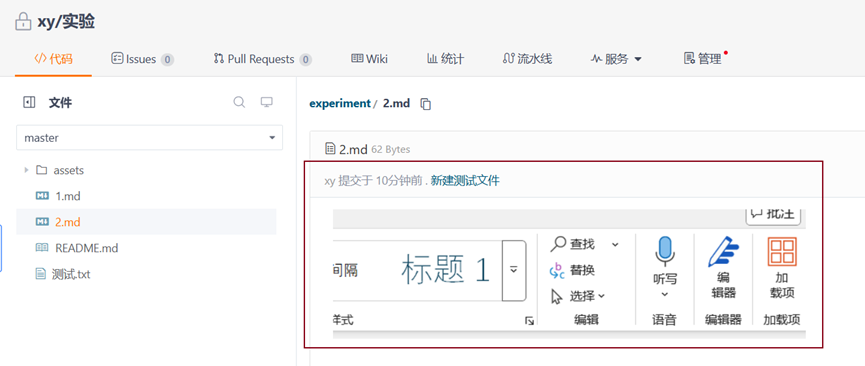关于向量的基础概念,可以参考:向量数据库学习笔记(1) —— 基础概念-CSDN博客
一、 pgvector简介
pgvector 是一款开源的、基于pg的、向量相似性搜索 插件,将您的向量数据与其他数据统一存储在pg中。支持功能包括:
- 精确与近似最近邻搜索
- 单精度/半精度浮点向量、二进制向量及稀疏向量
- 多种距离度量:L2距离、内积、余弦距离、L1距离、汉明距离、杰卡德距离
- 支持所有具有Postgres客户端的编程语言
- 同时继承PostgreSQL全部核心优势

二、 安装与启用
https://github.com/pgvector/pgvector
下载并解压安装包
cd pgvector
make
make install插件安装(注意它叫vector,不叫pgvector)
CREATE EXTENSION vector;三、 简单用法
1. 建表与增删改
Create a new table with a vector column
CREATE TABLE items (id bigserial PRIMARY KEY, embedding vector(3));add a vector column to an existing table
ALTER TABLE items ADD COLUMN embedding vector(3);Insert vectors
INSERT INTO items (embedding) VALUES ('[1,2,3]'), ('[4,5,6]');load vectors in bulk using COPY
COPY items (embedding) FROM STDIN WITH (FORMAT BINARY);Upsert vectors
INSERT INTO items (id, embedding) VALUES (1, '[1,2,3]'), (2, '[4,5,6]')
ON CONFLICT (id) DO UPDATE SET embedding = EXCLUDED.embedding;Update vectors
UPDATE items SET embedding = '[1,2,3]' WHERE id = 1;Delete vectors
DELETE FROM items WHERE id = 1;2. 向量查询
Get the nearest neighbors to a vector
SELECT * FROM items ORDER BY embedding <-> '[3,1,2]' LIMIT 5;Supported distance functions are:
<->- L2 distance<#>- (negative) inner product<=>- cosine distance<+>- L1 distance<~>- Hamming distance (binary vectors)<%>- Jaccard distance (binary vectors)
Get the nearest neighbors to a row
SELECT * FROM items WHERE id != 1 ORDER BY embedding <-> (SELECT embedding FROM items WHERE id = 1) LIMIT 5;Get rows within a certain distance
SELECT * FROM items WHERE embedding <-> '[3,1,2]' < 5;Note: Combine with ORDER BY and LIMIT to use an index
3. 距离查询
Get the distance
SELECT embedding <-> '[3,1,2]' AS distance FROM items;For inner product, multiply by -1 (since <#> returns the negative inner product)
SELECT (embedding <#> '[3,1,2]') * -1 AS inner_product FROM items;For cosine similarity, use 1 - cosine distance
SELECT 1 - (embedding <=> '[3,1,2]') AS cosine_similarity FROM items;4. 聚合查询
Average vectors
SELECT AVG(embedding) FROM items;Average groups of vectors
SELECT category_id, AVG(embedding) FROM items GROUP BY category_id;四、索引
pgvector支持两类索引,即前面提到过的两类算法 —— HNSW(默认) 与 IVFFlat。

1. HNSW索引
HNSW索引会构建一个多层图结构。相比IVFFlat索引,它具有更优的查询性能(在搜索速度与召回率的权衡方面),但构建时间更长且内存占用更高。此外,由于不需要像IVFFlat那样的训练步骤,该索引可以在表内尚无数据时直接创建。
创建各类距离索引
L2 distance
CREATE INDEX ON items USING hnsw (embedding vector_l2_ops);Note: Use halfvec_l2_ops for halfvec and sparsevec_l2_ops for sparsevec (and similar with the other distance functions)
Inner product
CREATE INDEX ON items USING hnsw (embedding vector_ip_ops);Cosine distance
CREATE INDEX ON items USING hnsw (embedding vector_cosine_ops);L1 distance
CREATE INDEX ON items USING hnsw (embedding vector_l1_ops);Hamming distance
CREATE INDEX ON items USING hnsw (embedding bit_hamming_ops);Jaccard distance
CREATE INDEX ON items USING hnsw (embedding bit_jaccard_ops);Supported types are:
vector- up to 2,000 dimensionshalfvec- up to 4,000 dimensionsbit- up to 64,000 dimensionssparsevec- up to 1,000 non-zero elements
2. IVFFlat索引
IVFFlat索引的工作原理是将向量划分为多个聚类列表,仅搜索距离查询向量最近的若干列表。相较于HNSW索引,它具有更快的构建速度和更低的内存占用,但在查询性能(速度与召回率的平衡)方面表现稍逊。
IVFFlat索引实现高召回率需把握三个关键要点:
-
数据准备:建议在表中已存有数据后再创建索引
-
列表数量设定:
-
数据量≤100万条时,建议初始值为行数/1000
-
数据量>100万条时,建议采用行数的平方根值
-
-
查询调优:设置合适的探测数量(probes参数)
-
较高值提升召回率,较低值加快查询速度
-
建议初始值为列表数量的平方根值
-
创建各类距离索引
L2 distance
CREATE INDEX ON items USING ivfflat (embedding vector_l2_ops) WITH (lists = 100);
Note: Use halfvec_l2_ops for halfvec (and similar with the other distance functions)
Inner product
CREATE INDEX ON items USING ivfflat (embedding vector_ip_ops) WITH (lists = 100);
Cosine distance
CREATE INDEX ON items USING ivfflat (embedding vector_cosine_ops) WITH (lists = 100);
Hamming distance
CREATE INDEX ON items USING ivfflat (embedding bit_hamming_ops) WITH (lists = 100);
Supported types are:
vector- up to 2,000 dimensionshalfvec- up to 4,000 dimensionsbit- up to 64,000 dimensions
五、 最佳实践








橙色是探针节点,越多越准确








参考
部分内容来自AI回答
https://github.com/pgvector/pgvector?tab=readme-ov-file#hnsw
在 PostgreSQL 中为生成式 AI 应用程序查询向量数据的最佳实践_哔哩哔哩_bilibili








![[创业之路-344]:战略的本质是选择、聚焦, 是成本/效率/低毛利优先,还是差易化/效益/高毛利优先?无论是成本优先,还是差易化战略,产品聚焦是前提。](https://i-blog.csdnimg.cn/direct/2f1e278ce98d4f0ab2329af51beb1994.png)









![[Java微服务架构]4_服务通信之客户端负载均衡](https://i-blog.csdnimg.cn/direct/2feeeb2030f44360a9df25de2035636d.png)
